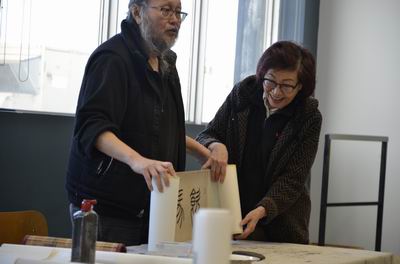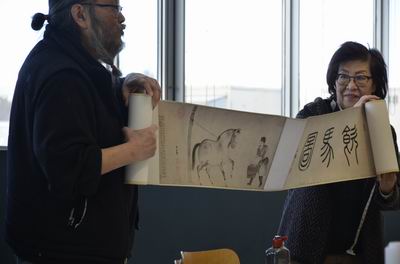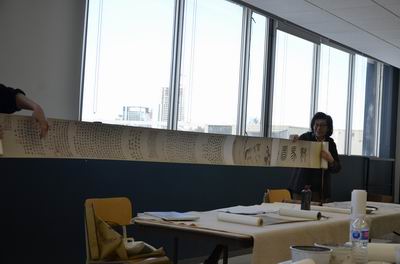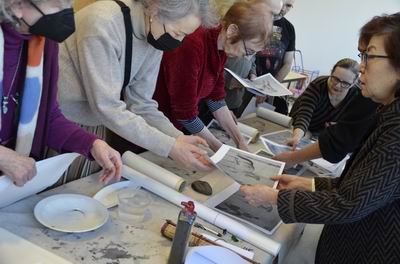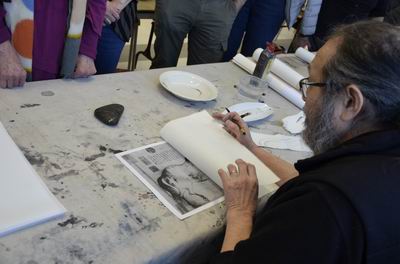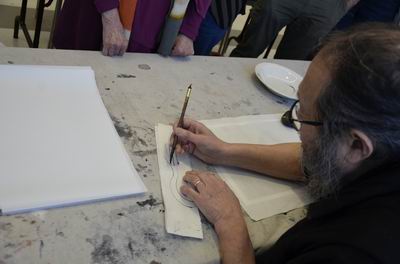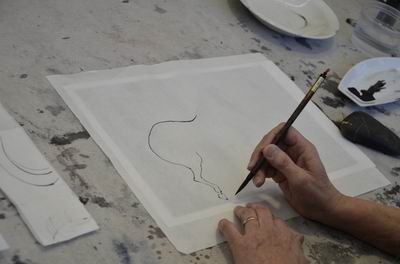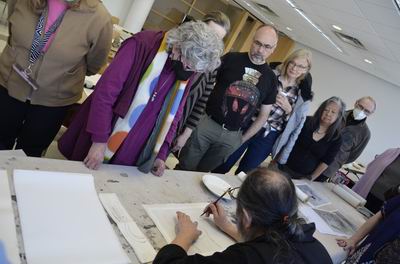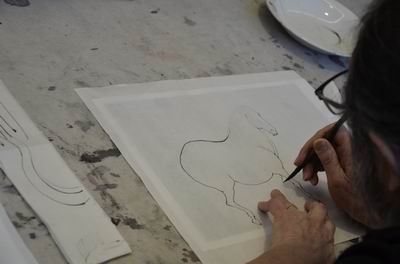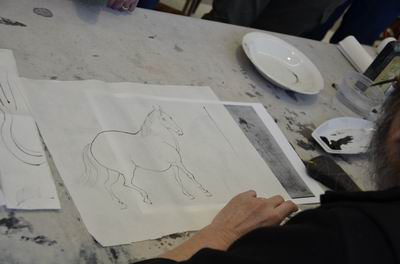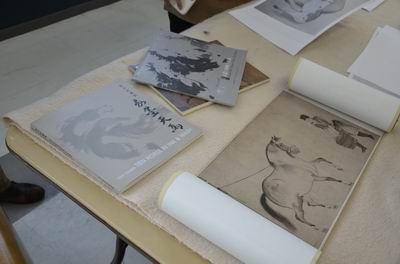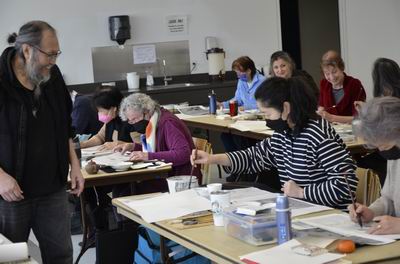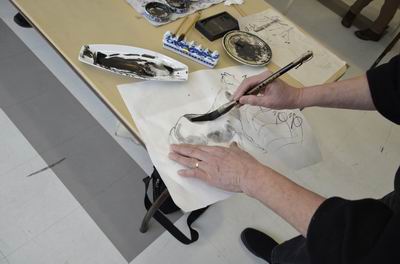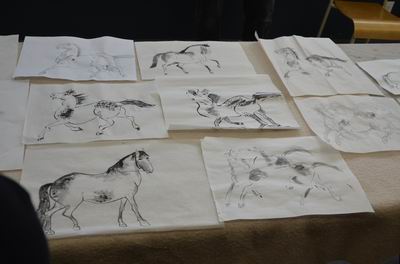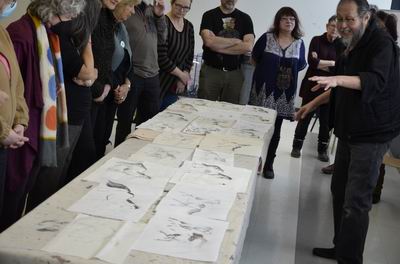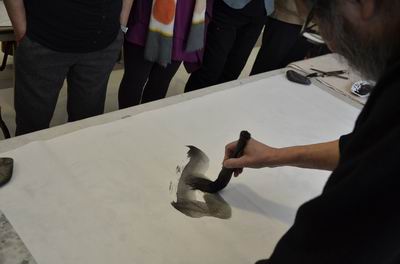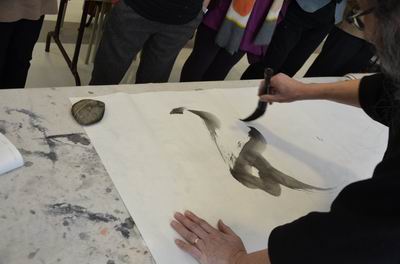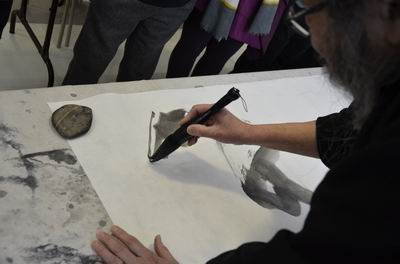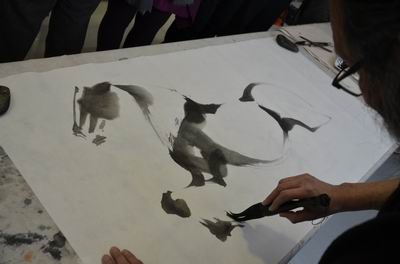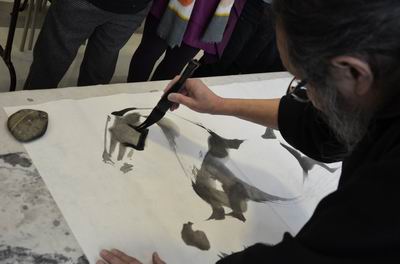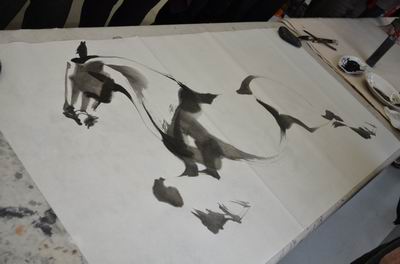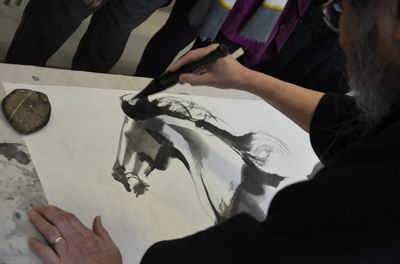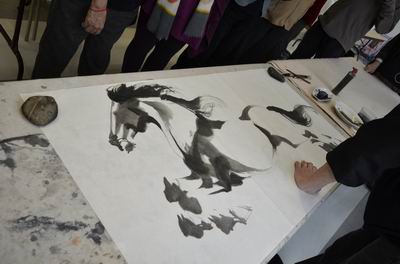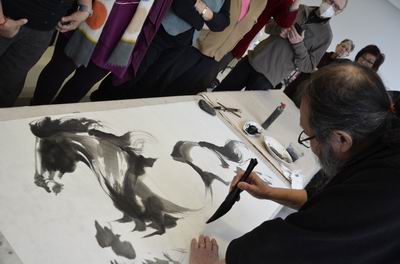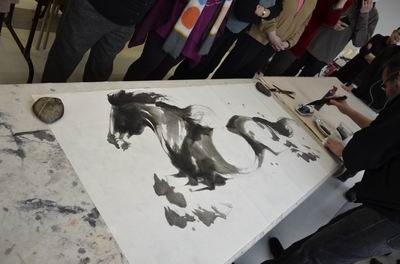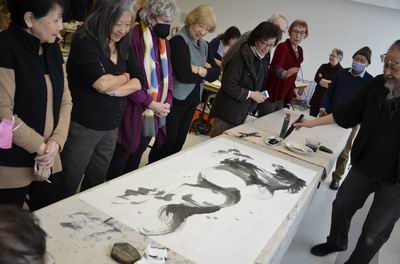Ancient Masters with Tien Chang - March 11th, 2023
Ancient masters are artists who painted hundreds of years ago, yet whose works are still revered today. Tien Chang and his wife brought some old scrolls of the ancient masters so we might learn from their techniques.
The horse was featured in these scrolls.
When an owner bought the scroll, he often added his comments which were often larger than the artwork.
Copies of the ancient masters' horses were given to artists at the workshop. These copies would be used as the basis for copying the ancient masters' paintings.
You can learn techniques by tracing a painter's artwork. Put your rice paper over the painting.
Tien Chang said that painting some lines on a blank piece of paper is important since you will have finer lines when tracing.
Use a fine pointed brush when tracing.
Take your time.
Tracing teaches you how the ancient masters captured the proportions and details of the horse.
You will finish your trace with the outline of a horse as painted by an excellent painter from the past.
Tien Chang has painted the horse many times and published books with his horse paintings.
Then it was the artists turn to trace the horses of the ancient masters with help from Tien Chang.
Use a large brush to add shading to the coat of the horse.
We looked at our own horses created with the tracing technique.
What is the worst painting here? asked Tien Chang. It is your painting. Each artist thinks his painting of the horse is the worst. There is no perfect painting. We learn from other painters and they learn from us.
Tien Chang also painted his horse for us.
Working with a large brush, Tien Chang works from the inner horse outwards.
The head is done in one stroke.
The legs are painted by emphasizing the joints and hoofs.
Dark ink highlights the horse features.
A leaping horse suddenly appears. Tien Chang's goal is to capture the spirit of the horse.
The wind swept mane is created with a dryer brush and some twisting, swirling brush strokes.
The tail likewise seems swept up in the motion of the horse.
Interestingly, the belly and back of the horse only have a faint outline.
Dots from a tapping brush add to the vitality of a leaping, running horse.
Artists were left mesmerized by a lively, spirited horse.
You can find more information about Tien Chang in the links section.
